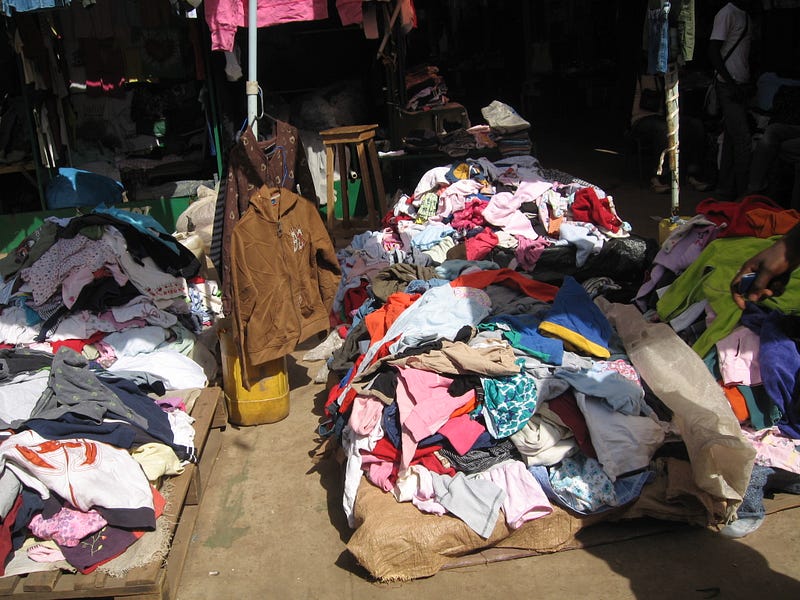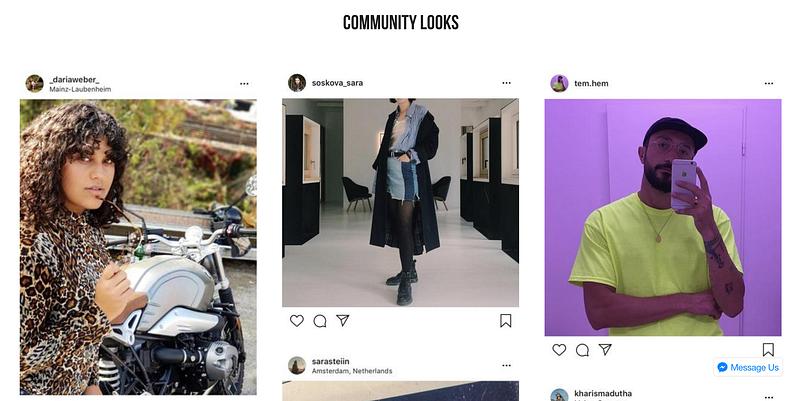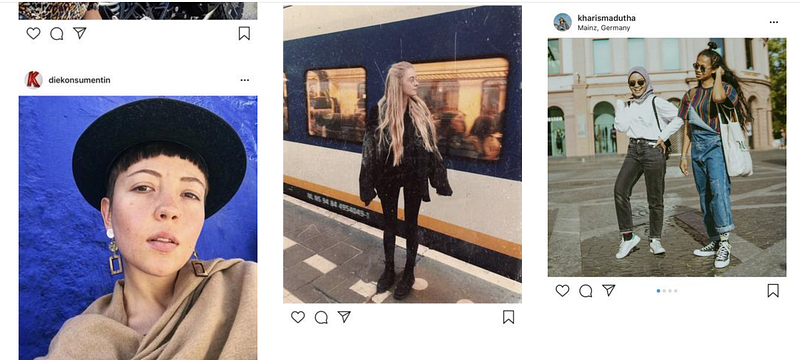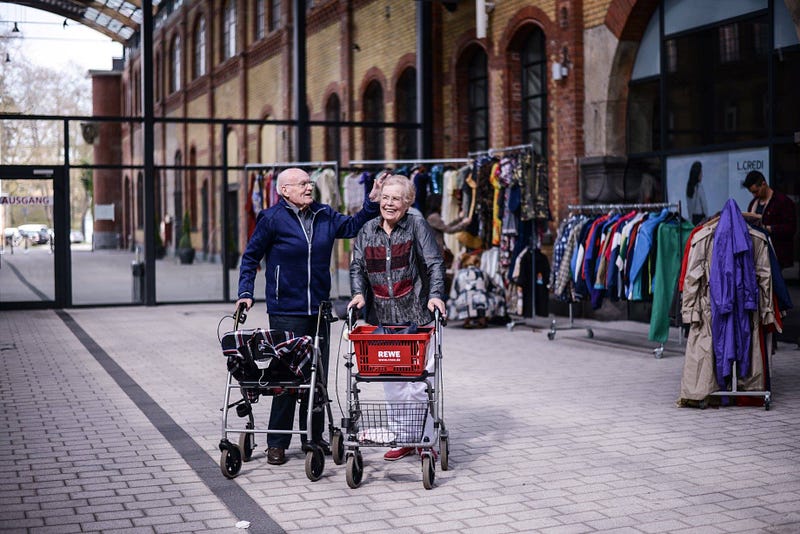Standing still and looking at the numbers, we have had in the first 3 years of running Vinokilo .
There were a whooping 100t ( 100,000 kg ) clothes of clothes saved. This is an equivalent of +315,000 clothing items given a new life ( on average one sack 22kg has 66 items ) ( Updated the numbers 15th of January 2019 ).
‘100t’ is just a number, a number which for some of you seem small, for others seem large. But it is a number which we regard as starting point. A starting point which indicates what we at Vinokilo stand for.
“We founded Vinokilo to give people the opportunity to buy secondhand clothes as firsthand fashion”
And we wanted to do this at scale, meaning we wanted to give everyone (everyone meaning from all income levels, parts of society) the chance / the opportunity to choose second clothes over firsthand fashion.
Starting with most central question ‘where do our clothes come from’ to ‘what does sustainability mean for us’ to ‘what does Vinokilo stand for’.
Hopefully you will find an answer to all the things you have been wondering… and what we missed communicating earlier.

Where do our clothes come from?
Are the clothes really second-hand?
The people who have been to our events can surely confirm and for the people who have not been to our events I can tell you; that looking at the quality items we have at the events it is hard to believe that these items are actually ‘rubbish’ ( items which people have gotten rid of ).
But yes, these items are a 100% Second Hand. And Yes, there is a tremendous amount of work behind it before the items are displayed as in the picture below.

Where does the ‘clothing waste’ come from?
The ‘clothing waste’ our clothing item come from all over the world. Canada — to — Norway, basically from everywhere, but mostly developed countries. The clothes are meant to travel to oversea destinations such as Africa and South East Asia. A comfortable way for developed countries to get rid of their waste problems.
How do we get access to these clothes?
The clothes come from our partner and friend who sits in the Netherlands. We started sorting together in no other place than his living room in east Amsterdam. By now we have grown to a stage that he has trained up people who go through those clothing waste disposals and sort out the clothes we can sell at Events.
Clothes typically are found at sorting warehouses. These sorting warehouses are located all over Europe and act as intersection where clothes are processed in accordance of quality and usability into three different categories. These categories are:
- Can be sold
- Can be sold in low income countries
- Trash — to go into landfills
Following the credo ‘Another Man’s trash is another Man’s treasure’, we select the clothes we believe our visitors would love the most. We benefit from knowledge we have acquired on what items are requested by our users which enable us to make smart choices around the most popular secondhand fashion.
The Clothes are washed, repaired , hand folded and put into sacks. These sacks are unfortunately plastic, however we use those because they are robust and see through. At every Event we take care not to break the bags in order for us to reuse these.
Some ( 10% ) of the Jackets we have are from charity ) because in humanitarian aid they are not needed as much and the money is used to buy medicine and supplies. We don’t know which charities exactly, not sure if this is something we can improve upon, it is more a fact to be stated here. Charities sell some of its more heavier items in order to buy supplies ‘aid — supplies’.
Should we let them go to Africa instead of selling them?
Clothing to Africa is a stupid white man thing, I think it’s horrible that we think that people in Africa have nothing to wear. I have been to Africa ( purposefully generalising as ‘Africa’ ) many times. It’s not about giving clothes for free as a charity it’s about destroying local economies. If you look at Ruanda, Ghana or Kenya the local garment industry has disappeared the more t’s ( T-shirts) — are imported and sold at close to nothing.

What happens to the clothes if they don’t go to us?
The clothes get partly sold to other companies, but a major component of those clothes get sold to oversea developing countries. But also a significant amount goes painfully into landfills. We are too small as a company to influence this but it is etched all over our minds, as a severe problem. We are constantly searching for a longterm solution to stop clothes ending up in landfills or going along these sort of trade routes.
How do you select clothes?
Clothes are selected according to buyer request. Before every event we do a Facebook poll and ask potential Event attendees which clothes they would foremost love to purchase. Based on these requests we can predict over time which clothes are most likely to be sold at the events. Clothes are selected based on quality, fabric, age of the items.
What can you say about the quality of clothes?
We have exceptional high quality standards, every item is checked and hand folded before every Event!!!
This is huge amount of work, but its 100% worth it, as we don’t want to be perceived as some rumble clothing store or mouldy vintage store, but rather as the go to place where secondhand clothes look like firsthand fashion.
Our answer to the fast fashion industry.

Why don’t you sell your clothes for a higher price?
It’s funny, but a lot of people ask that. Why do you sell so cheap?
There is a simple reason for that, some time ago we decided to focus on impact rather than getting rich. Of course we are a business, a social enterprise and at the end of the day we have to put a certain margin on the clothes in order to earn a living. However this margin is nowhere as high as it could be. The simple reason is impact.
Impact — Proud to be Commercial
I know that people in recent times have criticised us for being commercial or us reaching / attracting the masses. Truth be told, I’m super proud of us, that we receive this status. I’m proud that we are commercial.
There are several reasons for this. But I guess it all comes down to how people perceive the term ‘global — impact’.
During Fashion Week 2017, I was walking through the very hyped ‘Greenshowroom’ in Berlin. I tried to talk to almost all the stalls there. Many of which were super arrogant towards me. They had more eyes for the bloggers, drinking champagne and eating chocolate, then little old me being just interested in the ‘How it works and how to collaborate’.
Interesting for me was the price. I’m not poor, but out of the 100 stalls which I found at the Event, I couldn’t afford a single item. All these stalls were talking, branding themselves as ‘The NEW Sustainable Brand’. Better supply chains, better working condition, more efficient dealing with resources.
For me it was quite disappointing.
How can you create something and market it as a super sustainable global solution, a global impact, if only 1% of the population can afford it. How can you point your finger at other people and judge them about buying at H&M & Zara etc. Have you considered these people can’t afford other alternatives. Have you considered that these people want to look cool? For me it was charade and I got quite sick of the pretentious people I found.
For me its the normal Fashion Industry with just a different coating. Sorry.
If you don’t try to scale or reach the masses with your ‘soooo sustainable product’ are you actually making a contribution / impact or are you just marketing / selling ? Producing more, where more is not needed ?
What is your actual impact… ?
Vinokilo Impact
What does sustainability mean for us?
We are a company of scale, have always been ( Mindset ) . We are having or are attempting to have global impact, we inspire people to consume differently and by people its not about the top 1% in society, its everyone ( inclusive & affordable ). Sustainability for us is opening the mindset to people, that secondhand is firsthand and that yes it’s okay to consume and wanting to look cool, and yes, Vinokilo gives you that choice.
We encourage people to see clothes as timeless pieces of art. Unlike new products churned out by the clothes industry, vintage clothes carry a history. They tell stories. By consuming them, people are encouraged to be creative about themselves.


Not only do we create new life cycles for the clothes we sell, not only does the customer feel the delight and satisfaction of contributing to ‘sustainability’, also this kind of consuming can generate new mindsets. It plays a major role as frustration and guilt are overcome, giving rise to enthusiasm to further new ideas. A paradigm shift.
Hence we inspire people to see clothes as timeless pieces of Art, which can live on continuously and are no less different to newly industrialised clothing items — only for its carrying of stories / history.

Sustainability — some background research
During past decades a throwaway culture has lead to clothing being thought of more like wrapping paper and less like reusable, functional art. A culture in which clothes are bought, worn and disposed of.
A culture which saw the rising of fast fashion brands like Zara, Primark, and H&M.
A culture in which advertisement industry uses idols form show-bizz (models, actors, movie stars) to create huugeeee longing to go weekly maybe even daily shopping, which in due course have created a buy — throwaway routine.
If we now put this culture into statistics!
The Americans lead this unruly statistic with throw aways of 70 pounds of clothing, linens and other textiles each year. Per Person!The different countries in Europe even if having a considerably lower statistic of around 30- 40 Pounds cannot be portrayed as environmental superstars.
In total shoes and clothes create about 10 Million tons of municipal solid waste in our landfills each year.
This might come as a shocker to many , to many others might sound quite familiar.
The fashion industry is the second most polluting in the world.
But think … at the moment there are 800 Million tons of clothing not put to any use. They are laying around.
Yes it is a problem but also there is an opportunity.
We @Vinokilo want to leverage those unused clothing items.
What can we improve upon
Our Vans who bring the clothes to our Events are Diesel which we at this stage have no solution for.
We have 10% damaged plastic sacks per Event, which we can’t reuse.
People have found clothes of right — wing groups / criminal organisations amongst our stock. Yes all the clothes are secondhand and yes right- wing groups dispose of clothes as well. We will educate ourselves to try reduce these unfortunate occurrences.
Talk to us
We are just at the beginning, some of you might agree, some others might not agree with the path we are taking. Which is totally fine.
What we are asking you to do is to go in discourse with us , let’s talk, lets exchange opinions and ideas. We are eager to learn, I really mean it.
Much Love.
Robin ( in the name of the Vinokilo Team )

The Illustration on the top of the article has been created by the artist Lucy Bohr.